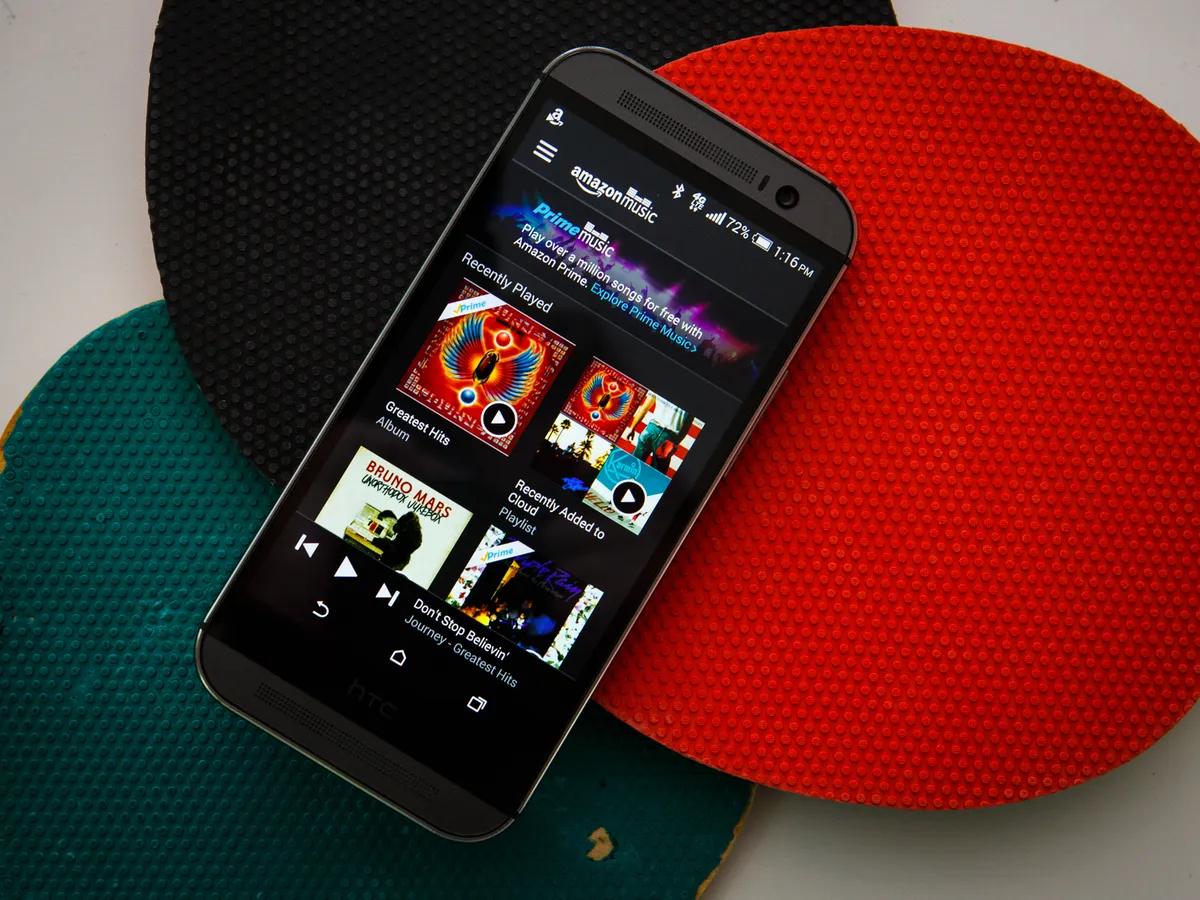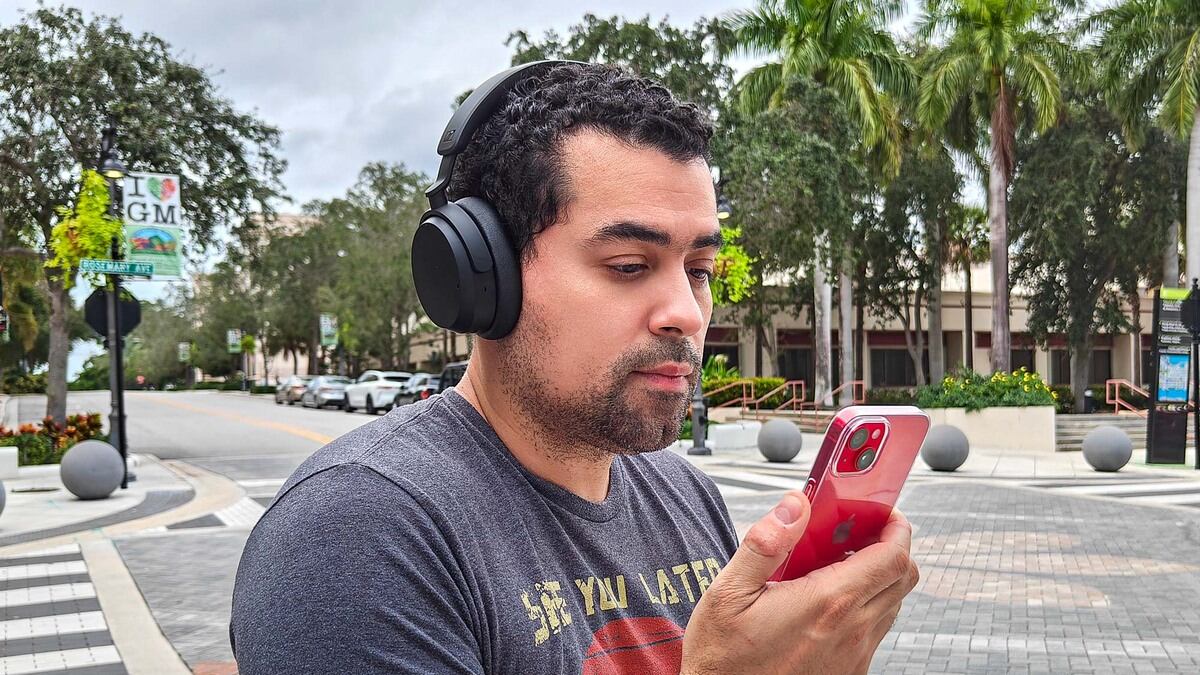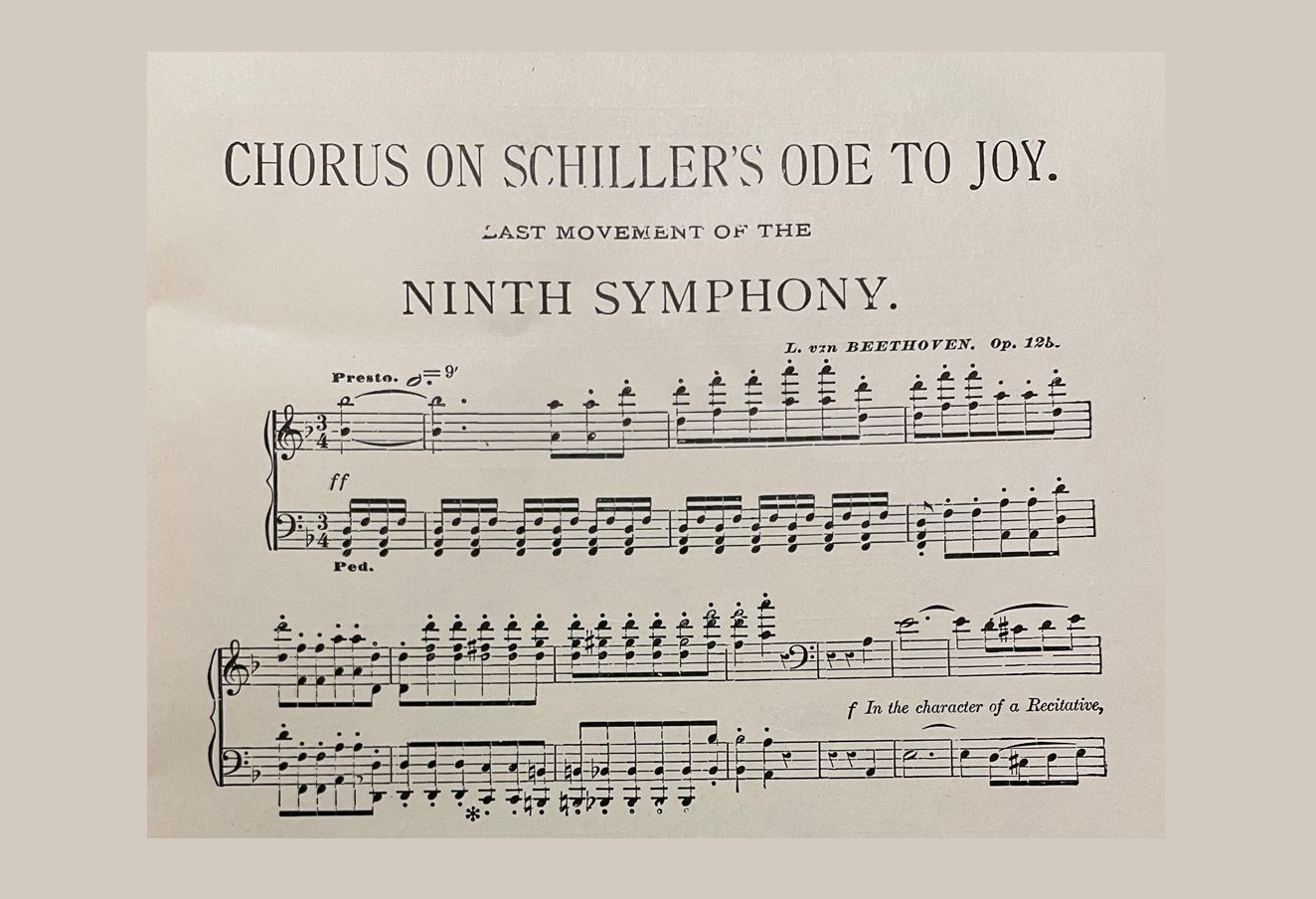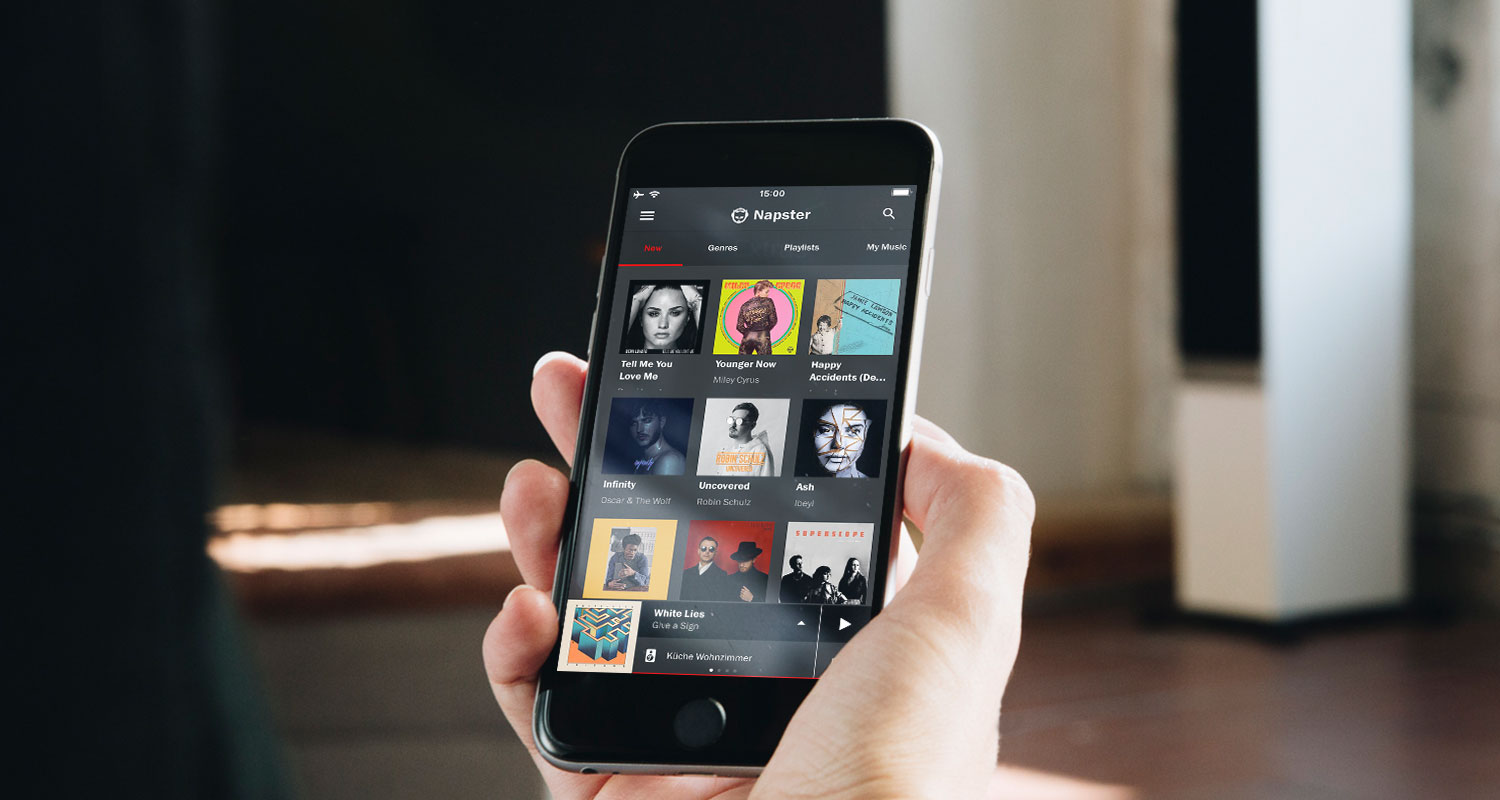Home>Devices & Equipment>Streaming>Why Does BPM Change When Streaming Music


Streaming
Why Does BPM Change When Streaming Music
Published: March 9, 2024
Discover why streaming music BPM changes and how it affects your listening experience. Learn how streaming services handle BPM adjustments.
(Many of the links in this article redirect to a specific reviewed product. Your purchase of these products through affiliate links helps to generate commission for AudioLover.com, at no extra cost. Learn more)
Table of Contents
Introduction
Music has the remarkable ability to evoke emotions, set the mood, and get our bodies moving. One crucial element that influences the rhythm and energy of a song is its BPM, or beats per minute. The BPM serves as a musical heartbeat, dictating the tempo and overall feel of a track. However, with the advent of music streaming services, the consistency of BPM in our favorite songs has come into question.
As music enthusiasts, we've likely experienced the frustration of a beloved song sounding slightly different when played through a streaming platform. This phenomenon has sparked curiosity and concern among listeners, prompting the question: "Why does BPM change when streaming music?"
In this article, we'll delve into the intricacies of BPM in music, explore the impact of streaming on BPM, and uncover the factors contributing to BPM changes. Additionally, we'll examine the role of music platforms in influencing BPM variations. By gaining a deeper understanding of these dynamics, we can appreciate the complexities of music streaming and its effects on the songs we love. Let's embark on this rhythmic journey to unravel the mysteries behind BPM fluctuations in the streaming era.
Understanding BPM in Music
BPM, or beats per minute, is a fundamental aspect of music that profoundly impacts our listening experience. It serves as a universal measure of a song's tempo, representing the number of beats or pulses occurring within a minute. This metric is crucial for musicians, DJs, and dancers, as it provides a clear indication of a track's speed and energy.
In practical terms, BPM influences how we perceive and interact with music. A higher BPM often corresponds to a faster-paced, energetic feel, while a lower BPM signifies a more relaxed and subdued ambiance. For instance, a lively dance track might boast a BPM of 120 or higher, encouraging movement and excitement, whereas a tranquil ballad could feature a BPM below 60, eliciting a sense of calm and introspection.
Moreover, BPM serves as a vital tool for music production and performance. Musicians and producers utilize BPM to synchronize various elements within a composition, such as drum patterns, melodies, and vocal arrangements. This synchronization ensures that the musical components align harmoniously, creating a cohesive and engaging sonic experience for the audience.
Furthermore, BPM plays a pivotal role in the art of DJing and remixing. DJs leverage BPM to seamlessly blend and transition between tracks, maintaining a consistent energy level throughout their sets. Additionally, remixers use BPM as a guide when altering the tempo of a song to create unique reinterpretations while preserving its rhythmic integrity.
In essence, BPM serves as a musical compass, guiding the rhythmic flow and emotional resonance of a song. Its influence extends beyond the realm of music production, permeating our everyday experiences and shaping our emotional responses to different genres and styles.
Understanding the significance of BPM in music provides a foundation for comprehending its impact on streaming platforms. As we unravel the complexities of BPM in the digital age, we gain insight into the dynamic relationship between technology and musical expression.
The Impact of Streaming on BPM
The emergence of music streaming platforms has revolutionized the way we consume and interact with music. While these platforms offer unparalleled convenience and access to vast music libraries, they have introduced a subtle yet significant impact on the BPM of songs. The transition from physical media and digital downloads to streaming has led to a phenomenon where the BPM of certain tracks may exhibit variations when played through different platforms or devices.
Streaming services employ complex algorithms and data compression techniques to deliver music seamlessly over the internet. These processes, while optimizing streaming quality and bandwidth utilization, can inadvertently affect the original BPM of songs. As a result, listeners may notice subtle deviations in tempo or rhythmic consistency when streaming their favorite tracks.
One contributing factor to BPM changes in streaming is the encoding and decoding of audio files. Streaming platforms often utilize specific audio codecs and compression algorithms to transmit music efficiently. During this encoding process, subtle nuances in the original audio data, including BPM-related information, may be altered to accommodate streaming requirements. Consequently, when the encoded audio is decoded and played back, the BPM may exhibit slight discrepancies compared to the source material.
Furthermore, the diverse array of devices and playback settings used by listeners can influence BPM variations during streaming. Different hardware configurations, such as sound cards, speakers, and headphones, may interpret and reproduce audio signals with varying degrees of accuracy. Additionally, software settings and equalization options on streaming platforms can impact the perceived tempo of a song, further contributing to BPM fluctuations.
Moreover, the transition from physical media to streaming has prompted the remastering and reformatting of music catalogs to suit digital distribution. During this process, subtle adjustments to audio parameters, including BPM, may occur to optimize the listening experience across diverse streaming platforms and devices. While these modifications aim to enhance audio quality and compatibility, they can inadvertently introduce subtle BPM variations in the streamed versions of songs.
In essence, the impact of streaming on BPM underscores the intricate interplay between technology and musical expression. While streaming platforms offer unparalleled accessibility to music, the subtle alterations in BPM highlight the evolving landscape of music consumption in the digital age. As we navigate this dynamic terrain, understanding the nuances of BPM variations in streaming enriches our appreciation for the intersection of technology and artistic integrity.
Factors That Contribute to BPM Changes
Several interrelated factors contribute to the changes in BPM experienced when streaming music. These elements encompass a diverse range of technical, artistic, and logistical considerations, shedding light on the multifaceted nature of BPM variations in the digital realm.
-
Audio Compression and Encoding: The process of compressing and encoding audio data for streaming purposes can introduce subtle alterations to the original BPM of a song. Audio codecs and compression algorithms, designed to optimize file sizes and streaming efficiency, may inadvertently impact BPM-related information during the encoding process. As a result, the decoded audio may exhibit slight BPM variations compared to the source material, influencing the rhythmic perception of the streamed music.
-
Playback Devices and Settings: The diverse array of playback devices and settings utilized by listeners can significantly influence BPM changes during streaming. Variations in hardware configurations, such as sound cards, speakers, and headphones, can affect the interpretation and reproduction of audio signals, potentially leading to discrepancies in perceived tempo. Additionally, software settings and equalization options on streaming platforms may further contribute to BPM fluctuations, shaping the overall listening experience for users.
-
Remastering and Digital Optimization: The transition from physical media to digital streaming has prompted the remastering and optimization of music catalogs to suit online distribution. During this process, adjustments to audio parameters, including BPM, may occur to enhance the compatibility and sonic quality of streamed music. While these modifications aim to improve the overall listening experience, they can inadvertently introduce subtle BPM variations, reflecting the intricate balance between artistic integrity and technological adaptation in the digital music landscape.
-
Metadata Interpretation and Integration: The interpretation and integration of metadata, including BPM data, within streaming platforms can influence the consistency of tempo across different versions of a song. Variations in how streaming services interpret and process BPM-related metadata may contribute to discrepancies in tempo when songs are streamed across various platforms and devices. This aspect underscores the importance of metadata accuracy and compatibility in preserving the original rhythmic characteristics of music during streaming.
-
Dynamic Range Compression and Loudness Normalization: The application of dynamic range compression and loudness normalization techniques in streaming platforms can impact the perceived tempo and rhythmic dynamics of music. These audio processing methods, aimed at standardizing volume levels and enhancing playback consistency, may inadvertently influence the rhythmic nuances and BPM of streamed songs. As a result, listeners may encounter subtle variations in tempo due to the application of these audio processing techniques.
By examining these factors, we gain a comprehensive understanding of the intricate dynamics that contribute to BPM changes when streaming music. The convergence of technical encoding processes, playback variables, digital optimization practices, metadata interpretation, and audio processing techniques collectively shapes the rhythmic landscape of streamed music, highlighting the complex interplay between technology and artistic expression in the digital age.
The Role of Music Platforms in BPM Changes
Music platforms play a pivotal role in shaping the landscape of BPM changes experienced during music streaming. These platforms, encompassing a diverse array of streaming services and digital distribution channels, exert a profound influence on the presentation and preservation of BPM in streamed music. The interplay between music platforms and BPM variations reflects the intricate dynamics of technological adaptation and artistic integrity in the digital music ecosystem.
One of the primary contributions of music platforms to BPM changes lies in the interpretation and processing of audio metadata. Streaming services rely on metadata, including BPM data, to categorize and organize music within their libraries. However, discrepancies in how music platforms interpret and integrate BPM-related metadata can impact the consistency of tempo across different versions of a song. Variations in BPM interpretation may arise when songs are streamed across various platforms and devices, leading to perceptible differences in rhythmic characteristics. As a result, the role of music platforms in managing and interpreting BPM-related metadata significantly influences the rhythmic presentation of streamed music.
Furthermore, the implementation of audio processing techniques, such as dynamic range compression and loudness normalization, by music platforms contributes to BPM changes during streaming. These techniques, aimed at standardizing volume levels and enhancing playback consistency, inadvertently influence the perceived tempo and rhythmic dynamics of music. The application of dynamic range compression and loudness normalization across streaming platforms can introduce subtle variations in BPM, altering the rhythmic nuances of streamed songs. As a result, listeners may encounter differences in tempo due to the audio processing methods employed by music platforms.
Moreover, the integration of streaming-specific audio codecs and compression algorithms by music platforms plays a crucial role in BPM changes. These platforms utilize specific encoding and decoding processes to transmit music efficiently over the internet. However, the encoding and decoding of audio files for streaming purposes may lead to subtle alterations in BPM-related information, impacting the rhythmic presentation of streamed music. The utilization of streaming-optimized audio codecs and compression algorithms by music platforms influences the fidelity and rhythmic consistency of streamed songs, contributing to BPM variations experienced by listeners.
In essence, the role of music platforms in BPM changes underscores the intricate relationship between technological processes and artistic expression in the digital music landscape. By navigating the complexities of metadata interpretation, audio processing techniques, and encoding practices, music platforms shape the rhythmic presentation of streamed music, highlighting the evolving dynamics of music consumption in the digital age. As listeners engage with music across various streaming platforms, the interplay between technology and artistic integrity continues to define the rhythmic experience of streamed songs, reflecting the dynamic nature of musical expression in the digital era.
Conclusion
The evolution of music streaming has ushered in a new era of accessibility and convenience, offering listeners unparalleled opportunities to explore diverse musical landscapes. However, the subtle variations in BPM experienced when streaming music underscore the intricate interplay between technology and artistic expression. As we conclude our exploration of BPM changes in the streaming era, it becomes evident that the digital music ecosystem presents a dynamic tapestry of technical adaptation, artistic integrity, and listener experience.
The impact of streaming on BPM reflects the transformative influence of technology on the rhythmic presentation of music. From audio compression and encoding processes to the implementation of dynamic range compression and loudness normalization, streaming platforms navigate a complex terrain of technical considerations that shape the rhythmic nuances of streamed songs. These technical intricacies, while optimizing streaming efficiency and audio fidelity, contribute to the subtle BPM variations encountered by listeners.
Furthermore, the role of music platforms in managing and interpreting BPM-related metadata underscores the significance of accurate and consistent categorization of music within streaming libraries. The interpretation and integration of BPM data across diverse platforms influence the rhythmic presentation of songs, highlighting the importance of metadata accuracy in preserving the original tempo and energy of music during streaming.
As we navigate the digital music landscape, it is essential to recognize the evolving dynamics of music consumption and the impact of streaming on the rhythmic fabric of songs. While BPM changes may introduce subtle deviations in tempo, they also reflect the adaptability and resilience of music in the digital age. The rhythmic variations encountered during streaming serve as a testament to the dynamic nature of musical expression, inviting listeners to embrace the nuances and intricacies that shape their auditory journeys.
In essence, the conclusion of our exploration into BPM changes when streaming music invites us to appreciate the harmonious convergence of technology and artistry. As listeners, musicians, and enthusiasts, we are immersed in a rhythmic tapestry woven with technical innovation, creative expression, and the universal language of music. By embracing the complexities of BPM variations in the streaming era, we gain a deeper appreciation for the ever-evolving relationship between technology and musical integrity, enriching our musical experiences and resonating with the pulsating heartbeat of the digital music ecosystem.











